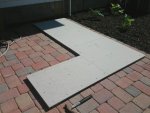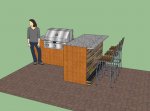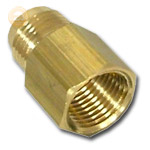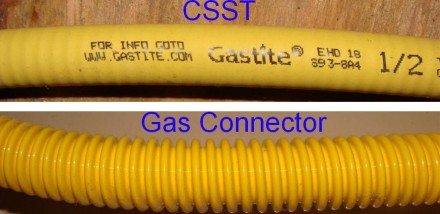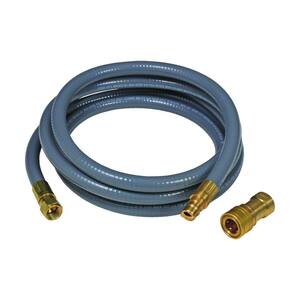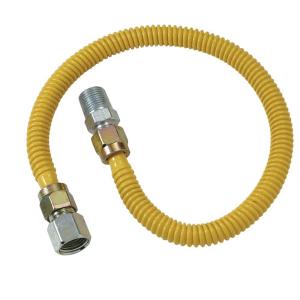The CSST would have been for inside the house. And that's fine, because it looks like you're all set with the stub out and valve already in place.
The only thing you have to figure out is if you want a quick disconnect (QD) or if you want a threaded connection. Quick disconnect is common for grills on casters, less common for permanent island installations like yours.
If you want a QD, it's probably be best to remove the black pipe nipple and cap and thread the QD right into the valve. Then just run a regular connection hose to the grill.
If you don't want the QD, you can leave the black pipe nipple if you want and thread the flex hose right on to the nipple. Or you can pull the nipple and thread the flex hose right into the valve. It really depends on what threads (female or male) the hose has. So you have options.
Did you grill come with a connection hose? Many do. If it's long enough and if it has the properly sized male or female threading, it can be threaded "as is" onto the nipple or into the valve.
If you don't have a hose, then any of the QD or regular connection hoses like this will work. My apologies for linking to a box store, but it was the first google hit that came up:
http://www.homedepot.com/p/Brinkman...onnect-Hose-812-7227-S/203016478#.UgbhZVOXIrU
For the quick disconnect, just to give you more finger room, I'd recommend you remove the black pipe nipple and get a fitting like this (properly sized) that will thread right into your valve, the QD fitting will thread on to the other end:
http://www.amazon.com/Parker-Brass-Fitting-Nipple-Length/dp/B000FMZ418/ref=pd_sim_lg_3
Then just look at the grill end fitting, and see if the hose will thread right on to the grill, or if you need another fitting to connect the hose to the grill.
Remember, for all threaded connections, I recommend pipe dope rated for gas connections even when yellow teflon tape is allowed. I prefer RectorSeal.
If you don't want a QD hose, then just connect a "regular" hose from the valve or nipple to the grill.
Here's a good link I just found that has a nice selection and explanation of hoses and fittings:
http://www.tejassmokers.com/NatGasHoses.htm
Now get that thing fired up and start grilling!



